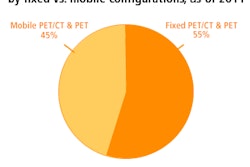Monday, November 28 | 11:40 a.m.-11:50 a.m. | SSC14-08 | Room S505AB
A pilot study at Children's Hospital of Michigan is seeking to determine whether 40 hours of steroid therapy can help characterize equivocal pulmonary nodules in FDG-PET/CT scans.So far, eight patients between the ages of 40 and 68 years (two men and six women) with six benign lesions and five malignant lesions have received two FDG-PET/CT scans. The first was a baseline scan, and the second was acquired within 10 days of the first scan and was taken only of the thorax. The eight patients also received 4 mg of dexamethasone at 40, 28, 16, and four hours before the second scan.
Two independent readers separately analyzed the lesions to determine any changes between the two scans and calculate the percentage change in maximum standardized uptake value (SUVmax).
A visual analysis found steroid treatment decreased the intensity of all 11 lesions. Semiquantitative analysis showed decreased SUVmax of 35% for benign lesions and 31% for malignant lesions. However, the researchers found no statistical or clinical difference in the change in SUVmax between benign or malignant lesions.
Decreased SUV after steroid therapy "may challenge the current practice of considering a greater than 20% reduction in SUV as a good response to chemotherapy in cancer patients receiving steroids," they noted.
Radiology resident Nitin Jain from Wayne State University/Detroit Medical Center will present the study at RSNA 2011.




















